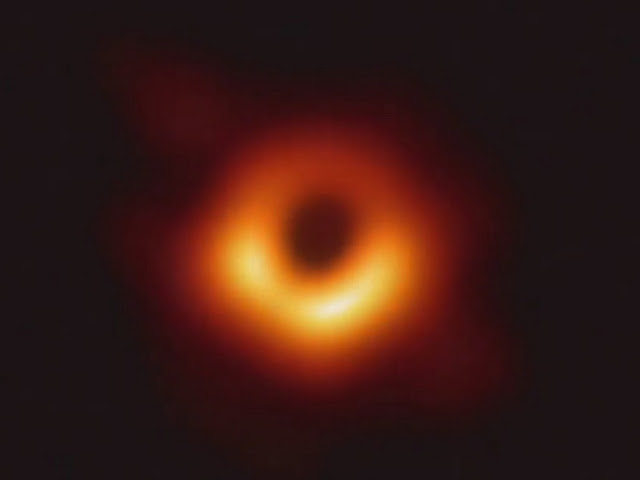How the World's first ever Black Hole image was captured | Happy Reading
How the World's first ever Black Hole image was captured | Do you think it is so easy to capture a Black Hole image through a World's most powerful Telescope ? If you think yes then you are wrong. The closest Black Hole from Earth what we know of is V616 Monocerotis and it is located about 3000 light years away from Earth and almost 10-14 times of the mass of the Sun. But when it comes to capture a Black Hole image, distance is not the only factor that matters. Right position is also needed to capture a proper image of it. Many of you may or may not know that our Milky Way Galaxy is a spiral galaxy, filled with hundreds of billions of stars and they are arranged like a flat disc. So it was complicated to capture our own Milky Way's Black Hole.
So scientists finally selected The Supermassive black hole at the center of Messier 87 Galaxy to capture the first ever image. Messier 87 galaxy is the largest galaxy that we know of and about 54 million light years away. The black hole that has been captured in image measured nearly 40 billion kilometers across and it has a mass 6.5 billion times that of the Sun.
But it was not scientists first target. The closest supermassive black hole to earth is located in our galactic backyard and it is located at the center of our Milky Way Galaxy. And the distance is almost 26,000 light-years away. But due to the position of this black hole scientists rejected it as they would have to look through "pollution" caused by stars and dust to capture the image. So they chose supermassive black hole of Messier 87. But in this case distance was the main challenge.
So scientists finally selected The Supermassive black hole at the center of Messier 87 Galaxy to capture the first ever image. Messier 87 galaxy is the largest galaxy that we know of and about 54 million light years away. The black hole that has been captured in image measured nearly 40 billion kilometers across and it has a mass 6.5 billion times that of the Sun.
But it was not scientists first target. The closest supermassive black hole to earth is located in our galactic backyard and it is located at the center of our Milky Way Galaxy. And the distance is almost 26,000 light-years away. But due to the position of this black hole scientists rejected it as they would have to look through "pollution" caused by stars and dust to capture the image. So they chose supermassive black hole of Messier 87. But in this case distance was the main challenge.
 |
| Image credit: Event Horizon Telescope Collaboration |
How they did it
Black hole images can only be captured by capturing their silhouettes against their glowing surroundings, scientists had theorized this. But capturing the image of such a far-away object was a big challenge to the Astronomers.
It was almost impossible to get a good quality image of that black hole even with the most powerful telescope on Earth. The ability to capture the image of a telescope depends on its' diameter or aperture. To see the details in such far-away object scientists need to gather as much light as possible so they need to use such a telescope with much larger aperture.
 |
| A close-up image of the core of the M87 galaxy, imaged by the Chandra X-ray Observatory. Image credit: NASA/CXC/Villanova University/J. Neilsen |
So they use VLBI technique (Very Long Baseline Interferometry) by creating an array of smaller telescopes that can be synchronized to focus on the same object at the same time and act as a giant virtual telescope. Such virtual telescope as the Event Horizon Telescope has an aperture nearly equal to the diameter of Earth.


Comments
Post a Comment